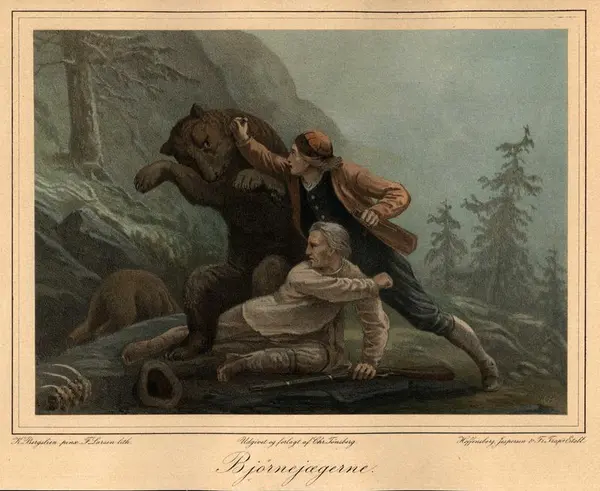- 1/1
Bear Hunters Norsk Folkemuseum
Norsk Folkemuseum has a large collection of about 1000 arms and powder horns.The collection contains both civilian and military items, spanning from the 1500s to the 1900s, with the main focus on the period from 1600–1850.
The exhibition “The Farmers’ Arms” focuses on the weapons’ importance in Norwegian rural society, which is a significant part of our cultural history. Weapons played a larger role in Norwegian society than in almost any other European country. Hunting was an integral part of most farmers’ subsistence, and the Norwegian army consisted up until the 1800s almost solely of farmer soldiers. Both the exclusive and more everyday weapons are shown in the exhibition, but the main focus is on weapons used in daily life, not on military history or weapons technology.
The exhibition is a cooperation with the Norwegian Arms and Armour Society which also has given generous economical support to the project.
